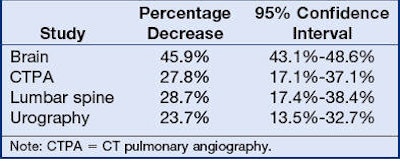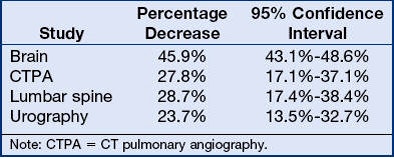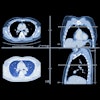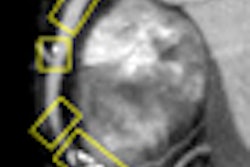
Scan data from 10 radiology practices in Australia showed that attendance at a radiation dose-optimization workshop nearly halved the doses subsequently given to patients.
The study, published online in the Journal of the American College of Radiology, aimed to evaluate dose data produced in 64-detector-row CT scanning, and assess the effects of a one-day feedback and optimization training workshop for radiologists on scan doses, according to medical physicist and lead author Anthony Wallace (JACR, August 2010, Vol. 7:8).
Baseline data from the 10 practices in Queensland, Australia, were collected for a variety of common adult and pediatric CT scanning protocols, including kV and mA settings, pitch, collimation, tube voltage, use of dose modulation, and scan length.
After data collection was complete, two one-day workshops were conducted in small groups over a weekend in Queensland. A feedback workshop featured "detailed analysis and discussion of factors contributing to dose for higher dosing practices for each protocol," the authors wrote.
In the workshop curriculum, "emphasis was given to the need for an outcome of a clinically diagnostic image obtained with an acceptably low radiation dose," the authors wrote. "To obtain an optimized balance between image quality and dose, it was suggested that region-of-interest analysis be used as an image quality metric while individual, moderate adjustments of tube voltage, mAs, pitch, beam collimation, and scan length could reduce overall scan dose."
The instructors also emphasized that any adjustment of scan protocol should be "undertaken in close consultation with a radiologist, and each factor modification should be assessed with region-of-interest review to determine image quality impacts," they wrote.
During the baseline survey period, the team collected 1,208 CT scans. The specific exams were chosen because they were commonly performed and avoided concerns about using different multiphase studies that produce wide dose variations, they wrote.
Dose assessment of the same studies after the workshops revealed significant decreases in mean effective doses for all scan protocols, with average reductions of 46% for brain scans, 28% for CT pulmonary angiography studies, 29% for CT lumbar spine scans, and 24% for urography images.
 |
| Table shows percentage effective dose reductions after optimization training. Radiation doses were reduced significantly for 10 facilities after two days of workshops on CT dose reduction. Image republished with permission from the American College of Radiology from JACR (August 2010, Vol. 7:8). |
Not all practices and protocols achieved the specified 25% reduction in effective doses, but the reductions were marked in the majority of practices and protocols, the authors wrote.
The study also showed that displayed dose-length product (DLP) can be used as a primary metric for dose optimization compared to skin entrance dose (ED). "If clinical staff members are more comfortable with ED as a metric, simple conversion factors from DLP to ED are available in the literature," they wrote.
By Eric Barnes
AuntMinnie.com staff writer
August 2, 2010
Related Reading
X-ray tube modulation helps reduce pediatric CT dose, July 21, 2010
Mayo method enables perfusion CT in a fraction of the dose, July 20, 2010
Cancer survivors have higher death risk for decades, July 14, 2010
Study: Training, audits will keep reins on CR/DR radiation dose, April 23, 2007
Copyright © 2010 AuntMinnie.com




















